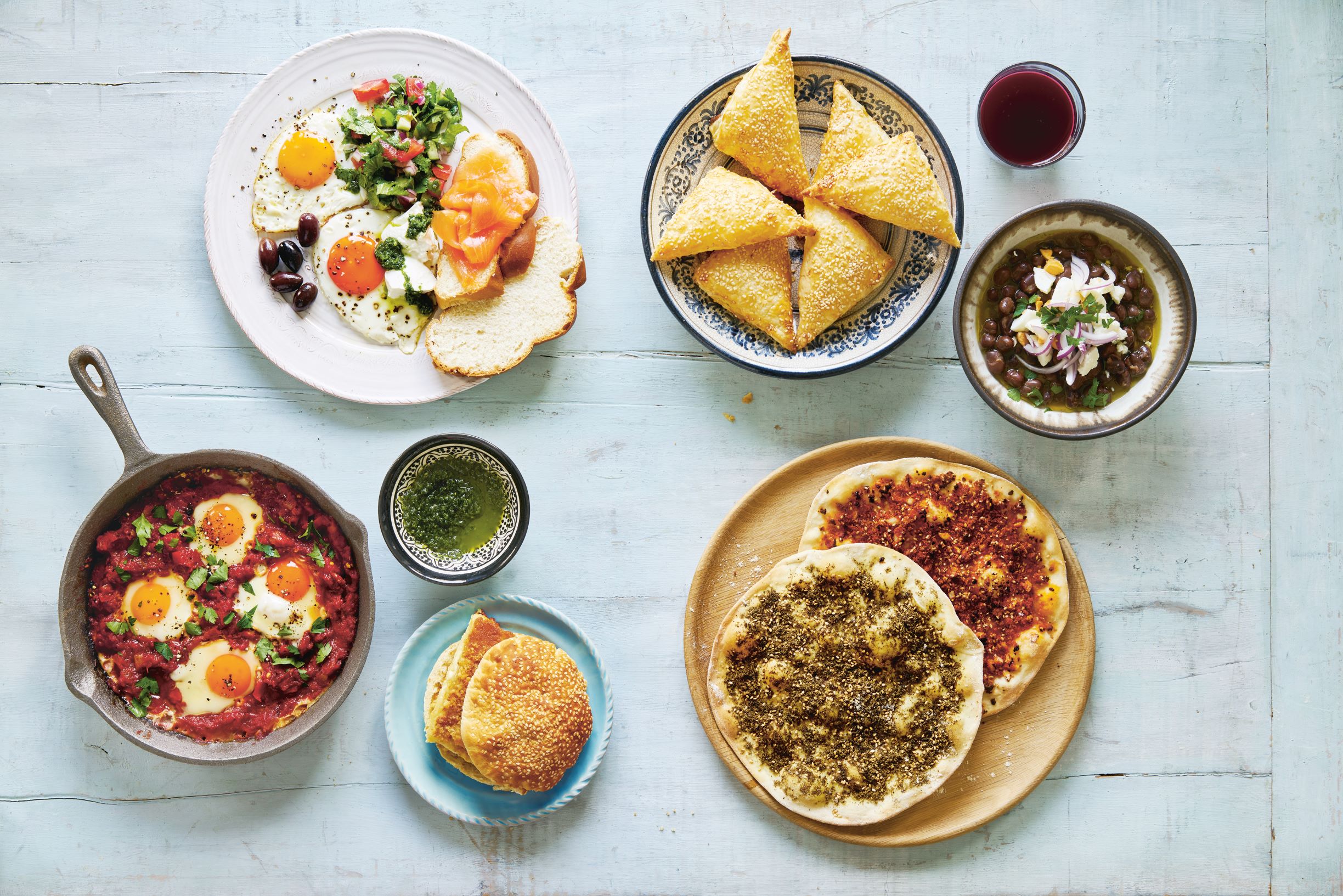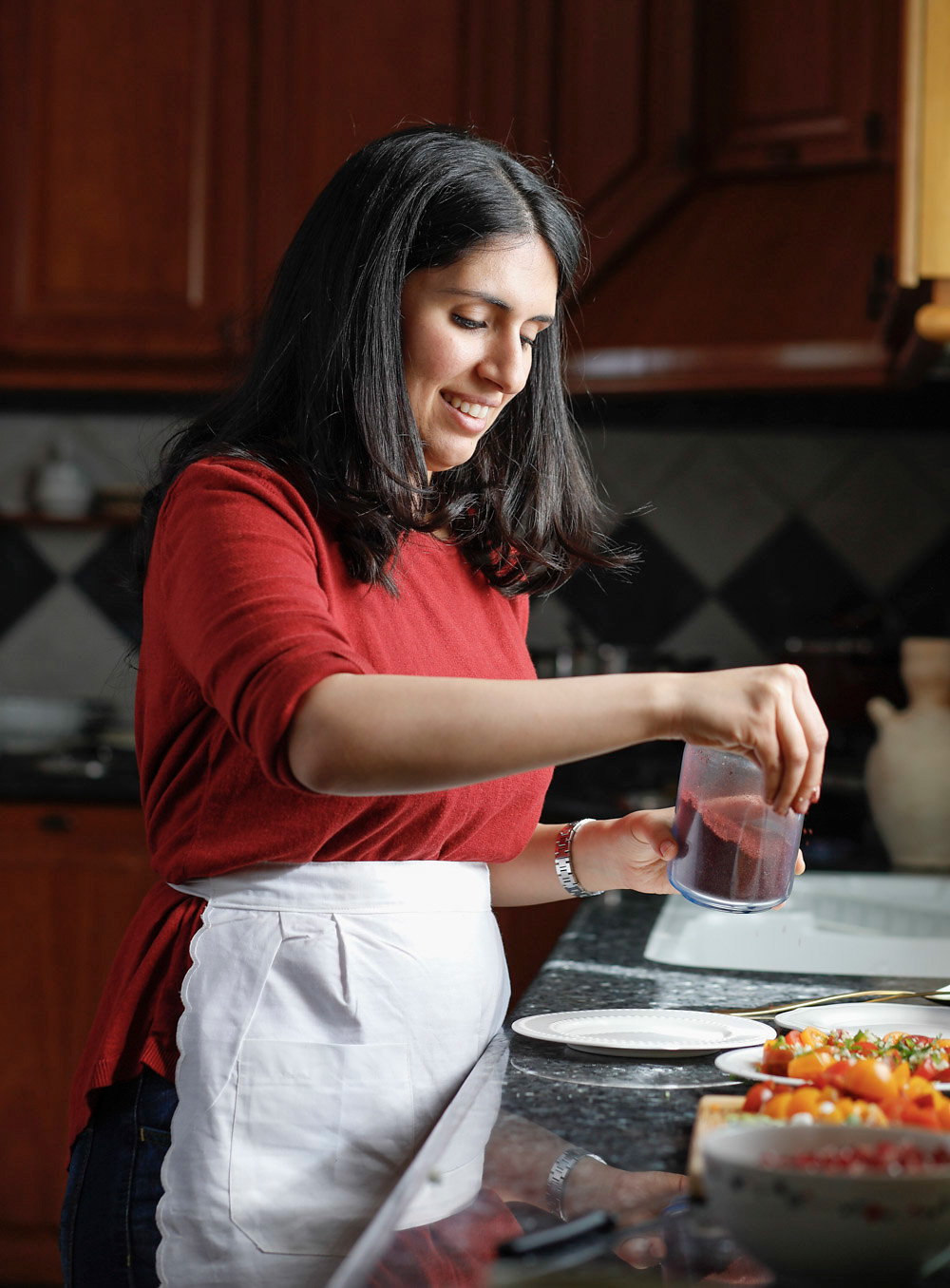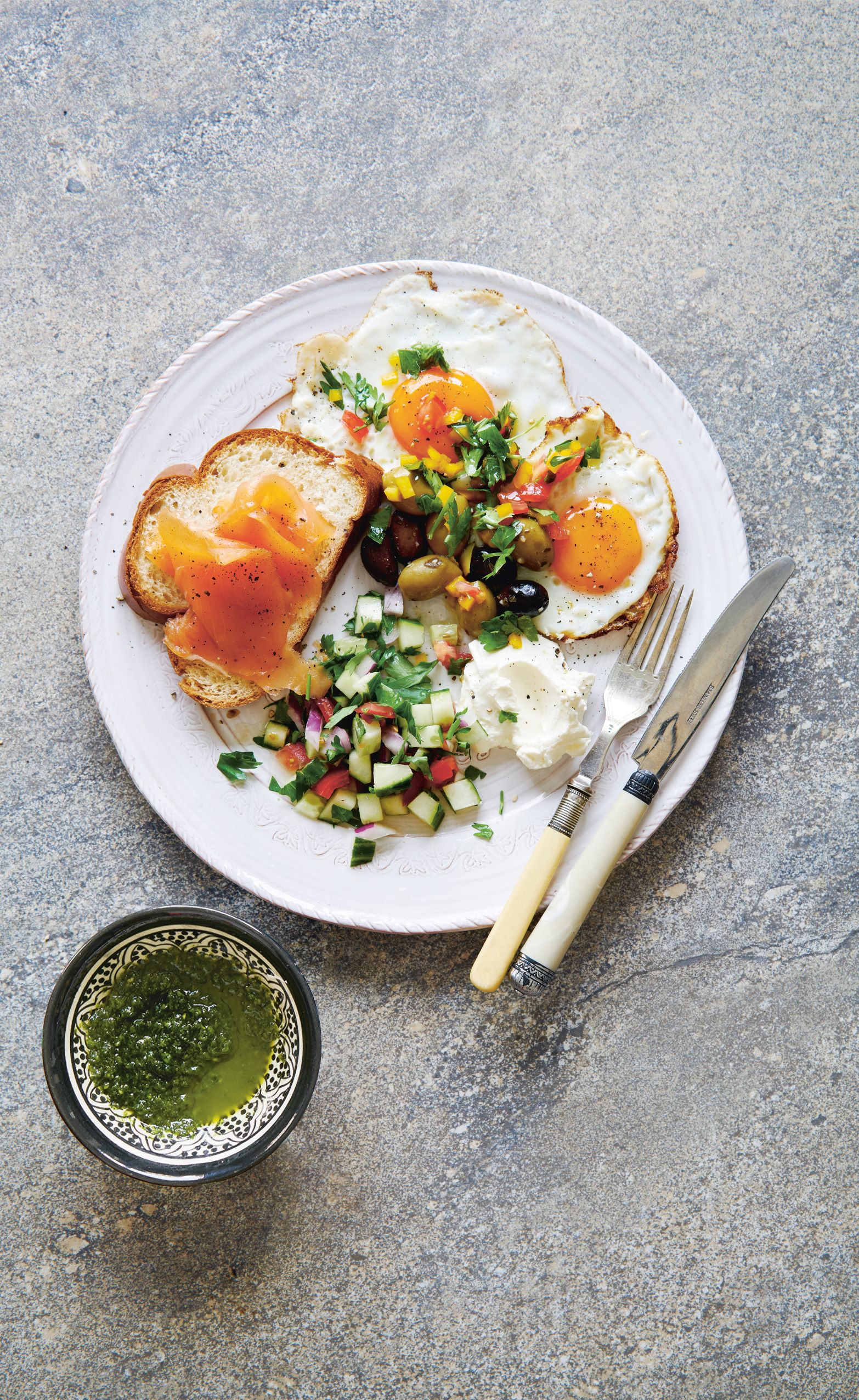
Breakfast in the Middle East
Add a little Levantine spice to you morning, courtesy of the Middle Eastern inclusions in Breakfast: The Cookbook
The dirverse cultures of the Middle East might find it hard at times to come together around the negotiations table, but they can always get together around the breakfast table. Breakfast: The Cookbook features hundreds of home-cooking recipes, as they're prepared in kitchens across the globe. Each is accessible and straightforward, but the book goes further, with guest contributors offering cultural context and culinary insight into the way different parts of the world make breakfast.
And the Middle East offers adventurous diners a range of new options. “If I close my eyes, I can picture my parents’ and grandparents’ breakfast tables: a bowl of labneh with a well of olive oil in the middle, a plate of sliced cucumbers and tomatoes, a ramekin of za’atar, a pot of olives, and a pile of freshly baked pita bread,” writes the Palestinian cook and Phaidon author Reem Kassis in her guest essay. “When I open my eyes, I see on my own kitchen table today, oceans away from Jerusalem, a ramekin of za’atar next to one of olive oil. It is ever present on the table and often refilled.
“Across the Middle East, and the Levant in particular, bread dipped in za’atar and olive oil is the breakfast of choice for the hurried weekday, and part of a much larger spread during a leisurely weekend breakfast. Throughout my childhood, this is what we ate on a daily basis, with some alternating additions depending on the season and generosity of the land. Home-cooked tomato spread, chili-and-walnut-stuffed aubergines pickled in oil, apricot jam, mulberry preserve, humus, avocados from our trees, pickled labaneh, boiled eggs, cheese, and tahini spreads also made the rounds.

"But the Middle East is such a wide and diverse region that we often borrowed dishes from neighbouring countries to enrich our breakfast table, especially if we had guests or were celebrating something: ful medames from Egypt, shakshuka from Tunisia, malawah with schug from Yemen, even stretching as far as Turkey to enjoy cheese borek. As a child, I didn’t understand the vastness and richness of this experience, thinking of these foods simply as breakfast. Only when I was far removed from my homeland did I grasp the expansive history of our region’s food, and how it tells a tale of unique culinary transformation and transmission.” Some of those culinary transmissions might not quite make it into everyone’s morning routine, but others are a pretty easy fit.

Schug, though a Yemeni introduction, finds its way onto Israeli’s breakfast plate, alongside sliced challah and smoked salmon, and is a good way to add a bit of Levantine spice to any cooked breakfast. All you need to do is blend together one seeded jalapeño chili, one seeded poblano chili, half a cup (10 g) cilantro (coriander); half a cup (10 g) of parsley, two mashed-up cloves of garlic, half a easpoon ground cardamom, some salt and pepper, and three tablespoons olive oil. Put it all (bar the olive oil) into a food processor; pulse the mixture until chopped, then add the olive oil gradually until the mixture is combined and completely smooth. Tap a little onto your breakfast plate, and the southern Mediterranean comes to you.

For more on Middle Eastern breakfasts, and plenty more besides, order a copy of Breakfast: The Cookbook here; and for more from Reem Kassis get The Palestinian Table.